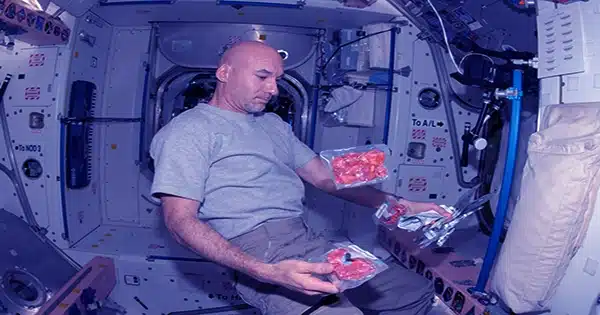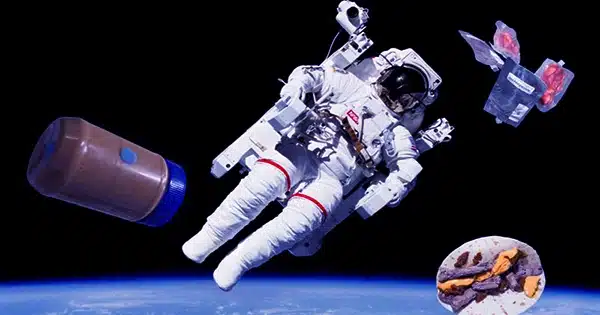Their major goal was to discover whether cultured meat or growing meat in bioreactors using real animal cells, is a realistic option for space as an in-situ protein food supply. Over the past year, the selected teams, one made up of the German business Yuri and Reutlingen University, and the other of UK enterprises Kayser Space, Cellular Agriculture, and Campden BRI, had the opportunity to further explore this idea with support from ESA’s Basic Activities’ Discovery component.
Cultivated beef would allow for the production of fresh and familiar meat products on-site. “The focus is to provide astronauts with nutritious food during long-term missions far from Earth, overcoming the typical two-year shelf-life of traditional packaged supplies,” ESA engineer Paolo Corradi adds. Given the limited resources available in space, growing fresh food in situ would be vital to boost a mission’s resilience and self-sufficiency, as well as providing psychological support to the crew.”

To address this difficulty, the British and German teams worked independently, comparing the nutritional worth of existing protein food alternatives researched in space, such as plants and algae, to produced meat. They presented various ways of cultured meat production as well as bioreactor technology.
The research findings are now available, and they appear to be encouraging. “After their analysis, both teams have come to similar conclusions and suggest that the idea of producing cultivated meat in space is not far-fetched and calls for further research,” Paolo goes on to say.
ESA is also focusing on technology to improve bioprocesses and metabolic resource utilization onboard spacecraft. “ESA is investing significant efforts in researching advanced life support systems,” says Christel Paille, an ESA life support engineer who works on cultured meat. “We are developing ground prototypes to investigate closed-loop systems that recover nutrients and recycle metabolic wastes, for example.” This might potentially be used in the production of cultured meat to recover the nutritious medium that we supply to the cells.
There is still much work to be done before we can begin feeding astronauts in this manner. Paolo goes on to say, “It’s something that is still in its infancy, so we proposed a roadmap that outlines the steps required to progress the necessary technologies and fill current knowledge gaps.”
“This includes understanding how cells adapt to altered gravity and radiation,” says Joo Garcia, an ESA researcher specializing in produced meat for space applications. “By using facilities available at ESA, we will soon start experiments to understand these effects.”
While we think of cultured meat for astronauts in space, it is also becoming a potential alternative for feeding the world’s rising population. Though more innovations and mentality modifications are needed before it becomes widely used, key milestones have lately been reached. Some examples include the United Nations FAO and WHO report’s positive appraisal of cultured meat and the full regulatory approval for two companies to market cultivated chicken products in the United States.
“Hopefully, we will see soon the European Food Safety Authority granting similar approvals and the research rapidly progressing,” Paolo goes on to say. “We have the impression that we are at the start of a process that will transform the industry, rendering the traditional meat production model obsolete.” Developed countries have historically had the chance to transition away from farming and animal slaughter, which is a very inefficient method of producing food, unsustainable for the earth, hazardous to our health, and raising increasing ethical issues among the people.”
Traditional meat production does offer a significant environmental risk, as it is a major contributor to greenhouse gas emissions, deforestation, biodiversity loss, and pollution, in addition to consuming vast amounts of water and land. Furthermore, it increases the risk of future pandemics and causes animal cruelty and suffering. As people become more aware of these challenges, grown meat has the potential to become an intriguing and essential alternative.
ESA’s continuous study in this subject could lead to a paradigm shift in how we produce and consume beef by transferring space technology to ground applications. This would result in a much-needed transformation that would benefit both the planet and mankind, and would be consistent with ESA’s commitment to the United Nations’ Sustainable Development Goals.
















